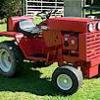Countdown To Christmas!
|
|

A-800 deck resto - back from the grave
By
wheeledhorseman, in Restorations, Modifications, & Customizations
|
|

By
wheeledhorseman, in Restorations, Modifications, & Customizations